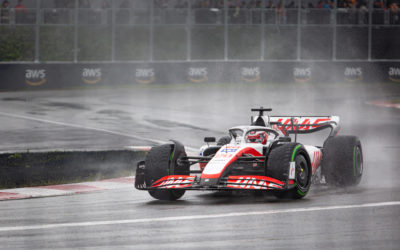Your Guide to using ISO for Hockey Photography
What is ISO?
As you might expect, ISO is an acronym.
What you might not expect is that it is an incredibly boring and mostly unhelpful acronym.
International Standards Organisation.
Wow, that’s boring. The guy who gives things cool names like “aperture” and “digital single lens reflex camera” must have been asleep on the job that day.
Well, there’s actually a pretty decent explanation for the boring name. ISO is a holdover from the days of film cameras. Film was made with different amounts of sensitivity to light. In order to guarantee what kind of result you’re going to get, it’s important to have a good standard.
Thus, ISO.
If you were out in bright sunlight, you would use film with a low ISO sensitivity. If you were in the dark, you would use film with a high ISO sensitivity.
When the digital age came around, the name stuck. In simple terms, turning up the ISO on a modern digital camera gives a “boost” to the image sensor, allowing it to capture more light.
But, this comes at the expense of more digital noise, which makes colours more dull and reduces sharpness.

Equal crops of unedited images taken at ISO 1600 (Left) and ISO 100 (Right). Notice that the high ISO in the left image has caused lots of noise in the dark areas of the image, as well as dull colours.
With that said, you acceptable ISO also depends on where you are going to use your image. If you’re planning on print your picture for a billboard, using a low ISO might be pretty important. On the other hand, if the image is just going on social media, ISO noise won’t cause you much trouble.
Using ISO at the Rink
Yes, you will be shooting with high ISOs at the rink. No matter what kind of gear you have, you will not be able to shoot a hockey game at ISO 100.
(Unless perhaps you have some seriously powerful flash or video lights. The players might not appreciate being blinded like that though)
Once you have your shutter speed and aperture set, it’s just a matter of dialing in an ISO that gives you a nice, even exposure.

When shooting hockey, your histogram should look something like this. The big peak on the right side is because of all the white ice and boards. Notice that nothing is touching the right side though, as that would mean parts of the image are going full white and the highlights are being clipped.
With that said, you acceptable ISO also depends on where you are going to use your image. If you’re planning on print your picture for a billboard, using a low ISO might be pretty important. On the other hand, if the image is just going on social media, ISO noise won’t cause you much trouble.
Using ISO at the Rink
Yes, you will be shooting with high ISOs at the rink. No matter what kind of gear you have, you will not be able to shoot a hockey game at ISO 100.
(Unless perhaps you have some seriously powerful flash or video lights. The players might not appreciate being blinded like that though)
Once you have your shutter speed and aperture set, it’s just a matter of dialing in an ISO that gives you a nice, even exposure.

1/500, f2.8, ISO 1600
When is your ISO Too High?
There will be different opinions about whether or not a picture is “beyond saving” due to ISO grain.
It’s possible that you’ll like what comes out of your camera at ISO 1600, even though the same shot makes your friend vomit. That’s just what it is. If this happens, stay proud of your photos and maybe consider getting some new friends.
The latest posts from the Photography Blog
Preparing for Your Family Photography Shoot: 6 Important Things to Consider
Preparing for Your Family Photography Shoot: 6 Important Things to ConsiderPlanning a family photoshoot? This short guide will give a list of what to consider in advance to make sure to get the most out of the time and have confidence you'll get some great...
How to Take Photos from the Grandstands of the Canadian Formula One Grand Prix in Montreal
How to Take Photos from the Grandstands of the Canadian Formula One Grand Prix in Montreal While all sports are challenging to photograph in their own way, Formula One is an especially difficult event to capture for the casual photographer. This guide is a summary of...
The Top 5 Reasons to Book a Corporate Headshot Photoshoot for Yourself or Your Team
The Top 5 Reasons to Book a Corporate Headshot Photoshoot for Yourself or Your TeamA professional, current headshot is a must in today’s digital-first society. For many lines of work, the difference between a good or a not-so-good headshot might be the dealbreaker in...
How to Photograph a Poker Game
How to Photograph a Poker GamePhotography is a varied skill, with each subject presenting a different challenge for you and your camera.Whether photographing sports, people in the street or wildlife, you will need to draw on different skills, both in terms of...
Creating Your Own Luck on the Street
Creating Your Own Luck on the StreetStreet photography is both exhilarating and nerve-inducing in equal measure. Capturing real people, as unpredictable and varied as they are, can offer huge challenges and wonderful rewards. As demonstrated in our article...
What are the best camera settings for hockey photography?
Have you ever tried to shoot hockey with your camera set to “Auto” or “Sport” and been disappointed with the results?
Cameras are getting smarter every day — but they still struggle with the challenges that come with photographing hockey.
The good news is that you can learn to set up your camera in manual mode and make the most of your time at rink.






